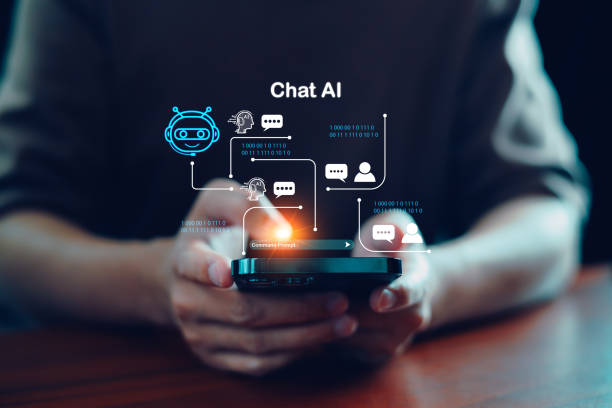What is an AI Robot? A Comprehensive Introduction
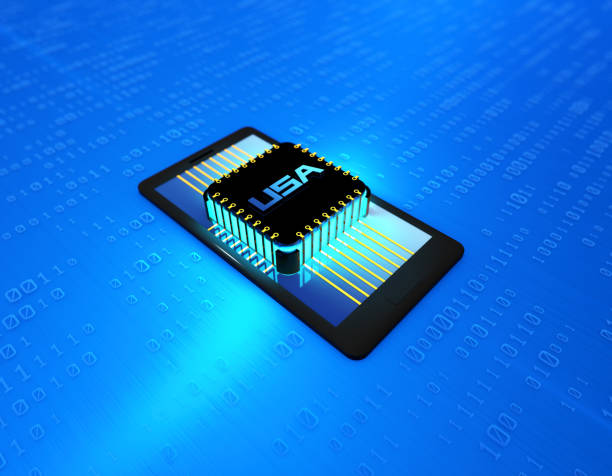
In today’s world, where technology is advancing at an incredible pace, concepts such as #Artificial_Intelligence and #Robotics have penetrated our lives more than ever.
At the heart of this revolution lies the concept of an Artificial Intelligence (AI) robot, a system that is not merely a mechanical machine but capable of understanding, learning, reasoning, and making decisions.
Unlike their traditional counterparts, these robots are equipped with complex machine learning algorithms and deep neural networks, enabling them to learn from data, recognize patterns, and perform more complex tasks.
They are not only capable of performing repetitive and hazardous tasks with high precision but can also operate autonomously in dynamic and unpredictable environments.
An AI robot can include mechanical components, sensors, actuators, and a powerful central processing unit equipped with AI software.
This software enables the robot to sense its surroundings, process information, and make decisions and act accordingly.
These capabilities have led to the deployment of these robots in various fields, including industry, medicine, services, and even space exploration.
Their importance stems from their ability to increase productivity, reduce errors, and perform tasks that are difficult or impossible for humans.
These advanced robots are not merely tools for automation but intelligent partners for solving complex problems and enhancing the quality of life.
Understanding the nature and capabilities of these systems is a fundamental step towards optimally utilizing their boundless potential.
Are you tired of losing business opportunities due to not having a professional company website?
Rasweb helps you by designing a professional company website:
✅ Build a powerful and reliable image for your brand
✅ Convert site visitors into loyal customers
⚡ Get a free consultation now!
The Evolution of AI Robots: From Dream to Reality
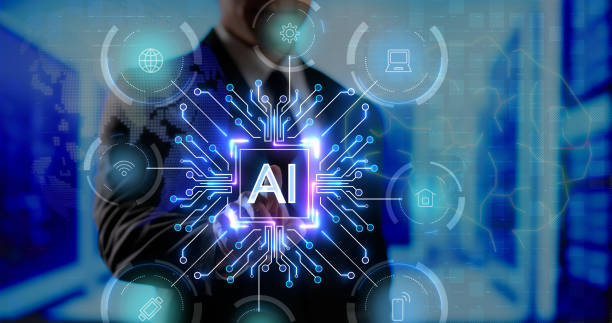
The history of the emergence of Artificial Intelligence robots has deep roots in science fiction literature and humanity’s dreams of creating intelligent beings.
From medieval mechanical automatons to early calculating machines, the idea of building a machine with mental capabilities has always existed.
However, the real turning point occurred in the mid-20th century with the birth of the concept of Artificial Intelligence as a scientific discipline at the Dartmouth Conference in 1956.
This conference laid the theoretical foundations for the development of intelligent systems that later brought today’s robots to life.
In the following decades, advancements in computer science, electronics, and mechanics paved the way for the creation of the first robotic prototypes.
The early 1960s witnessed the emergence of the first industrial robots like Unimate, which performed repetitive tasks on production lines.
These robots, though limited in intelligence, were significant steps towards industrial automation.
Over time, with advancements in natural language processing, computer vision, and deep learning, the capabilities of robots increased dramatically.
From Mars exploration rovers that automatically collect data to surgical robots that perform sensitive operations with unparalleled precision, every advancement testifies to the extraordinary evolution of AI robots.
Today, these intelligent machines have an active presence not only in factories but also in homes, hospitals, and even in cyberspace as smart assistants, demonstrating how humanity’s long-held dream has become a tangible reality.
Types of AI Robots and Their Wide Applications
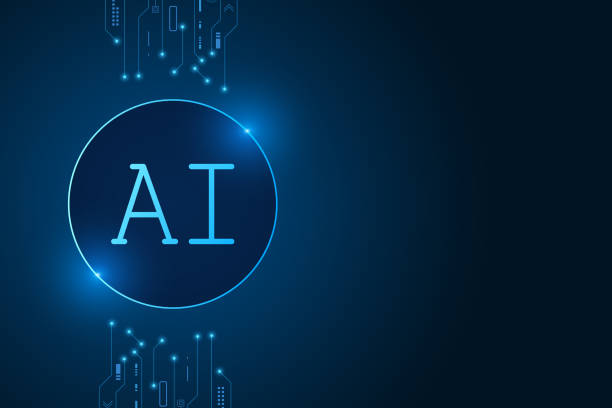
The variety of AI robots is vast, and this diversity is reflected in their various applications across industries and daily life.
From giant industrial robots operating on automotive production lines to small, delicate surgical robots saving human lives with micron-level precision, each demonstrates the unique capabilities of this technology.
One of the most important categories is industrial robots, primarily used for repetitive, hazardous, or high-precision tasks in manufacturing environments.
These robots increase productivity and improve worker safety.
Alongside industrial robots, service robots are also playing an increasing role in our lives.
This category includes domestic robots (such as smart vacuum cleaners), medical robots (such as surgical assistants and rehabilitation robots), military and security robots, and even educational robots.
Humanoid Robots, such as Sophia or Atlas, which are capable of human-like movements and interactions, form another exciting branch of this field.
These robots can be employed in social interactions, search and rescue operations, and even entertainment.
The applications of AI robots are not limited to these; from precision agriculture to logistics and transportation (such as self-driving cars), this technology is transforming all aspects of human life.
This wide range of applications demonstrates how smart robots have become an indispensable tool for progress and well-being.
| Category | Robot Type | Main Application | Known Example |
|---|---|---|---|
| Industrial | Robotic Arms | Assembly, Welding, Packaging | ABB YuMi, KUKA KR QUANTEC |
| Domestic Service | Housekeeping Robots | Cleaning, Elderly Care | iRobot Roomba, Pepper (in some homes) |
| Medical | Surgical Robots | Remote Surgery, Rehabilitation | Da Vinci Surgical System |
| Exploration | Mars Rover | Planetary Exploration, Data Collection | Perseverance Rover |
| Humanoid | Social Robots | Social Interaction, Customer Service | Sophia, Atlas |
Understanding How AI Robots Work: Hidden Technologies
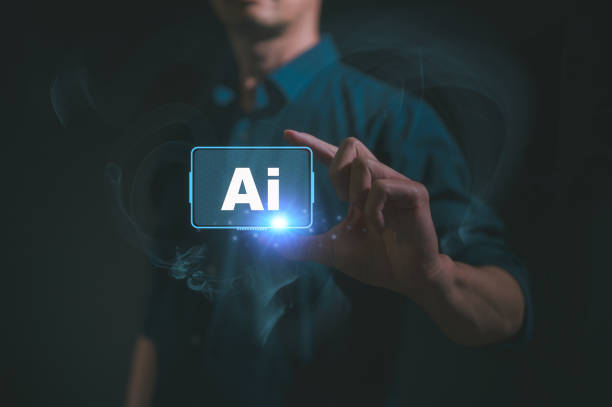
The operation of an AI robot results from a complex synergy of hardware and software, enabling it to perceive its environment, process data, and make decisions and act accordingly.
At the core of this capability are AI algorithms, particularly machine learning and deep learning.
These algorithms allow robots to learn from past experiences and improve their performance without explicit human programming.
For example, an AI robot can identify specific objects by observing thousands of images or choose an optimal movement path by analyzing sensor data.
A robot’s hardware typically includes sensors (such as cameras, lidar, radar, touch sensors) for collecting environmental information, actuators (such as motors and arms) for movement and action, and a central processing unit (powerful processor) for data analysis and algorithm execution.
The working process of these robots often involves the following steps: First, data is collected via sensors.
Then, this data is interpreted and analyzed by AI algorithms (such as neural networks) so that the robot “understands” its surroundings.
Based on this understanding, the robot decides what action should be taken (planning and decision-making).
Finally, these decisions are transmitted to the actuators for the robot to perform the necessary physical actions.
This continuous cycle of data collection, processing, decision-making, and action enables the robotic intelligent machine to operate dynamically and flexibly in various environments and perform complex tasks autonomously.
Are you worried that your company’s old website will drive away new customers? Rasweb solves this problem permanently by designing a modern and efficient company website.
✅ Increases your brand’s credibility.
✅ Helps attract targeted customers.
⚡ Contact Rasweb for a free consultation!
Countless Benefits of Using AI Robots in Daily Life
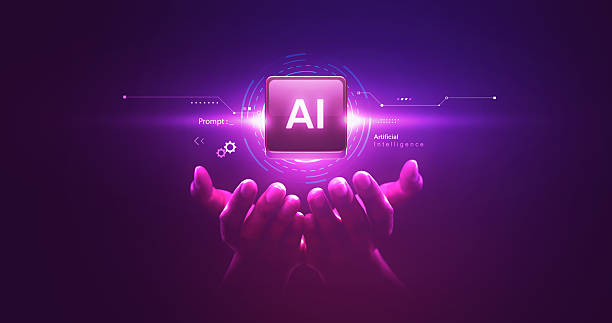
The integration of AI robots into our daily lives has brought countless benefits that go beyond mere task automation.
One of the most important of these benefits is increased productivity and efficiency.
Robots can perform repetitive and time-consuming tasks at a much higher speed and with fewer errors than humans, leading to savings in time and resources.
This is crucial, especially in industries requiring mass production or processing large volumes of data.
Furthermore, robots can operate in dangerous or inaccessible environments for humans, such as mines, contaminated areas, or even space, protecting human lives from hazards.
The high precision of robotic AI systems in performing tasks, particularly in fields such as surgery or electronic component manufacturing, yields significantly better results.
They can operate with micron-level precision, which is impossible for human hands.
Another advantage is their adaptability and learning capability.
With machine learning algorithms, a smart robot can adapt to new conditions, learn from its mistakes, and improve its performance over time.
This feature ensures that these robots maintain their efficiency even in dynamic and changing environments.
Finally, AI robots can provide personalized services, from voice assistants in homes to elderly care robots, significantly enhancing people’s quality of life and allowing humans to focus on more creative and complex tasks.
Challenges and Ethical Considerations of AI Robots: A Responsible Future
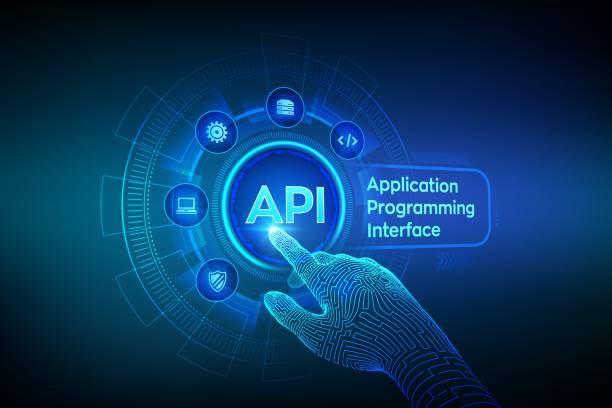
Despite countless advantages, the proliferation of AI robots also brings significant challenges and ethical considerations that must be carefully addressed.
One of the biggest concerns is the impact on the job market.
As robots become more capable of performing various tasks, there is a fear that many human jobs, particularly repetitive and low-skill ones, will be replaced by automation, which could lead to increased unemployment and social inequality.
This necessitates a reevaluation of educational systems and the creation of new job opportunities for coexistence with these technologies.
Issues related to privacy and data security are also significant challenges.
A robotic intelligent agent requires collecting vast amounts of data for optimal performance, which can include sensitive personal information.
Protecting this data from misuse or leakage is a critical priority.
Furthermore, complex ethical discussions arise concerning AI ethics, especially regarding robot accountability in case of error or harm.
Who will be responsible when a self-driving car crashes or a surgical robot makes a mistake? Also, bias in training data can lead to unfair or discriminatory decisions by robots, which requires the development of transparent and fair algorithms.
These issues highlight the necessity of establishing strong ethical laws and standards to ensure the responsible and safe development of AI robots.
The Impact of AI Robots on Societies and the Future Global Outlook
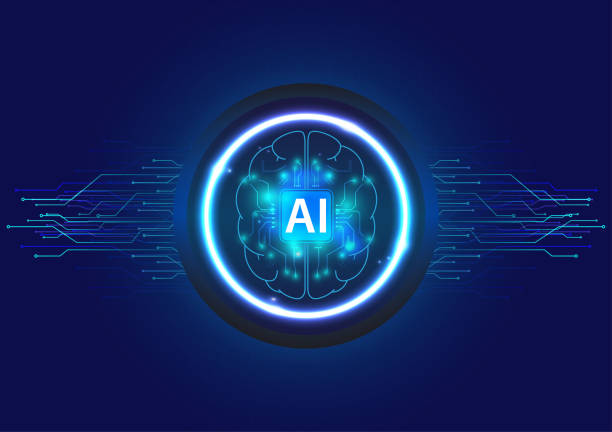
The impact of AI robots on human societies is a multifaceted and profound phenomenon that is transforming all aspects of our lives.
On one hand, this technology has the potential to shape a brighter future by solving major global challenges such as diseases, climate change, and resource scarcity.
In medicine, robots can assist in early disease detection, performing complex surgeries with unparalleled precision, and developing new drugs.
In agriculture, smart agricultural robots can contribute to global food security by optimizing water and fertilizer consumption, increasing crop yield, and reducing the need for human labor.
On the other hand, these developments also bring social transformations.
The nature of work, education, and even human interactions is undergoing a transformation.
With increasing automation, new skills will be required, and the concept of lifelong learning becomes increasingly important.
Smart cities, autonomous transportation, and AI-equipped homes are just a small part of the future landscape shaped by AI robots.
This technology can lead to increased access to services, improved quality of life, and the creation of new economic opportunities.
However, realizing this bright future requires careful planning, intelligent policymaking, and global cooperation to address ethical and social challenges, ensuring that AI robots are employed for the benefit of all humanity.
| Social Aspect | Positive Impact | Potential Challenges |
|---|---|---|
| Economy and Employment | Increased productivity, creation of new industries | Job replacement, need for retraining |
| Health and Treatment | Precise surgery, rapid diagnosis, better care | High cost, data ethical issues |
| Security and Privacy | Increased national and personal security | Privacy violation, data misuse |
| Quality of Life | More convenience, personalized services | Excessive dependency, reduced human interaction |
| Education | Personalized learning, access to resources | Digital divide, need for new skills |
Step-by-Step Guide to Designing and Building an Introductory AI Robot
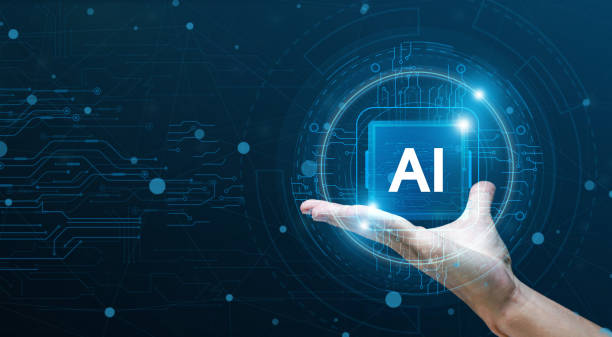
The dream of building an AI robot might seem out of reach, but with the right knowledge and tools, even beginners can take the first steps.
The first step is understanding basic concepts.
You need to understand what Artificial Intelligence (AI) is, how Machine Learning (ML) works, and what components robotics has.
Online educational resources, books, and introductory courses can be very helpful in this regard.
After that, you should set a small and achievable goal for your robot.
For example, building a robot that can navigate obstacles or a robot that can detect a specific object.
The next step is choosing suitable hardware.
For beginners, development boards like Arduino or Raspberry Pi are excellent options, as they are inexpensive, accessible, and have a large user community.
Additionally, you will need motors, sensors (e.g., ultrasonic sensors for distance detection or cameras for machine vision), and a power source.
After acquiring the hardware, it’s time for programming.
Python is an excellent choice for programming AI robots due to its powerful libraries in the field of artificial intelligence and its simplicity.
You can use frameworks like TensorFlow or PyTorch to implement machine learning algorithms.
Finally, continuous testing and optimization of the robot are crucial for debugging and improving its performance.
This iterative process will help you gradually develop your skills in designing and building smart robots.
Are you aware that a weak company website loses you many opportunities daily? By designing a professional company website with Rasweb, you can solve this problem permanently!
✅ Create a powerful and reliable image for your brand
✅ Attract new customers effectively and increase sales
⚡ [Get a free website design consultation]
Entertaining and Creative Aspects of AI Robots: Exploring the Unknown
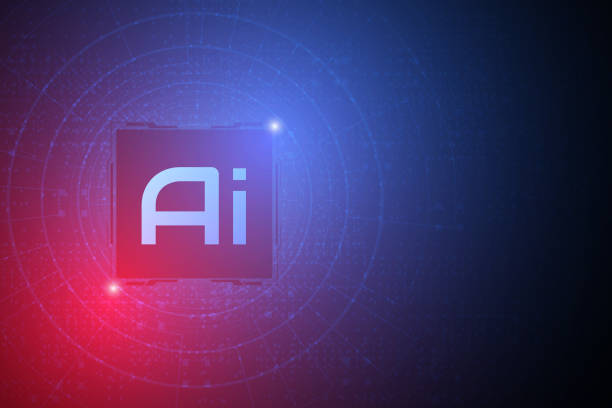
Beyond industrial and service applications, AI robots have immense potential for entertainment and creativity, providing unique experiences for humans.
From robots that can play music or paint to robots that engage in humorous interactions with humans, this field is expanding.
Smart pet robots, like Sony’s Aibo, are an example of how companionship and friendship can be provided without the usual care requirements of a real animal.
These robots can detect emotions, respond to sounds, and exhibit unique behaviors that are highly engaging for users.
In the gaming industry, smart robots act as sophisticated opponents and intelligent players, capable of learning new strategies and adapting to the user’s playing style, which makes the gaming experience much more realistic and challenging.
In the educational field, interactive robots can help children learn scientific, mathematical, and even foreign language concepts.
These robots, using AI, can personalize educational content to suit each child’s needs and learning pace, transforming learning into an enjoyable experience.
Even in art, artists use creative robots to produce works that go beyond human capabilities, such as abstract paintings or complex musical compositions.
These entertaining and creative aspects demonstrate that AI robots are not just tools for work but partners for creativity and enjoyment in our daily lives.
New Horizons for AI Robots: Beyond Our Imagination

The future of AI robots extends beyond the current technological boundaries, moving towards unknown and exciting horizons.
One of the most important areas of research is the development of Artificial General Intelligence (AGI); a system capable of performing any intellectual task a human can, independently and with high efficiency.
Achieving AGI will create a major revolution in all aspects of human life and has the potential to solve the most complex global issues.
Alongside AGI, research is also underway on robots with self-organization and self-healing capabilities, enabling them to fix their own flaws and evolve autonomously without human intervention.
Furthermore, we are witnessing the emergence of Soft Robotics, made from flexible materials, which can operate in environments where traditional metal robots cannot, such as inside the human body for minimally invasive surgeries.
The combination of nanotechnology with AI robots also opens new horizons in medicine (therapeutic nanorobots) and the production of new materials.
In addition to technical advancements, ethical and legal frameworks must also evolve alongside these developments to ensure that AI robots are employed in a responsible and humane manner.
The future of this technology depends not only on how we build smarter machines but also on how we use them to build a better world for all humanity.
These horizons, beyond our current imaginations, promise a new era of human-intelligent machine coexistence.
Frequently Asked Questions
| Row | Question | Answer |
|---|---|---|
| 1 | What is an AI robot? | An AI robot is a machine capable of understanding, reasoning, learning, and problem-solving, and can perform complex tasks with relative autonomy. |
| 2 | What are the most important applications of AI robots? | Key applications include industrial manufacturing, customer service (chatbots), medicine and surgery, autonomous transportation, space exploration, and military affairs. |
| 3 | What is the main difference between an AI robot and a regular robot? | A regular robot only follows programmed instructions, whereas an AI robot can learn from data, make decisions, and adapt itself to new environments. |
| 4 | How do AI robots learn? | They learn by identifying patterns and improving their performance through machine learning algorithms (such as deep learning, reinforcement learning) and processing vast amounts of data. |
| 5 | Can AI robots have emotions? | Currently, AI robots do not have real emotions in the human sense. They can mimic or recognize emotions, but they do not understand or experience them. |
| 6 | What are the current limitations of AI robots? | Limitations include the need for large amounts of data, inability to understand abstract concepts, lack of true creativity, ethical issues, and generalization challenges in new environments. |
| 7 | What is the role of AI in the development of humanoid robots? | AI helps humanoid robots to walk, maintain balance, perceive their surroundings, interact with humans, and perform complex tasks. |
| 8 | How is the future of AI robots predicted? | AI robots are predicted to become smarter, more autonomous, and capable of performing more complex tasks in daily life and industry, with increased interaction with humans. |
| 9 | Can AI robots replace all human jobs? | It is unlikely that all human jobs will be replaced. Robots will take over many repetitive and dangerous tasks, but jobs requiring creativity, empathy, and ethical judgment will remain. |
| 10 | What ethical and social challenges arise with the expansion of AI robots? | Challenges include issues related to privacy, data security, ethical decision-making by robots, impact on employment, and accountability in case of errors. |
And other advertising agency services by Rasweb in the field of advertising
Smart Sales Automation: An innovative platform to enhance sales growth by optimizing key pages.
Smart SEO: Revolutionize customer behavior analysis with precise audience targeting.
Smart Custom Software: A combination of creativity and technology for digital branding through user experience customization.
Smart Digital Branding: A blend of creativity and technology to improve SEO ranking through attractive UI design.
Smart Advertorials: A novel service for boosting sales growth through custom programming.
And over hundreds of other services in the field of internet advertising, advertising consultation, and organizational solutions
Internet Advertising | Advertising Strategy | Advertorials
Sources
Artificial Intelligence and the Future of Robotics
Review of the Latest Achievements in Robotics
New Developments in Artificial Intelligence
Smart Robots: Challenges and Opportunities
? Is your business ready to leap into the digital world? Rasaweb Afarin Digital Marketing Agency, by providing comprehensive and innovative solutions, paves your way to success. From professional website design and SEO optimization to managing targeted advertising campaigns, we are with you at every stage of your business growth.
📍 Tehran, Mirdamad Street, next to Bank Markazi, Kazerun Jonubi Alley, Ramin Alley No. 6

